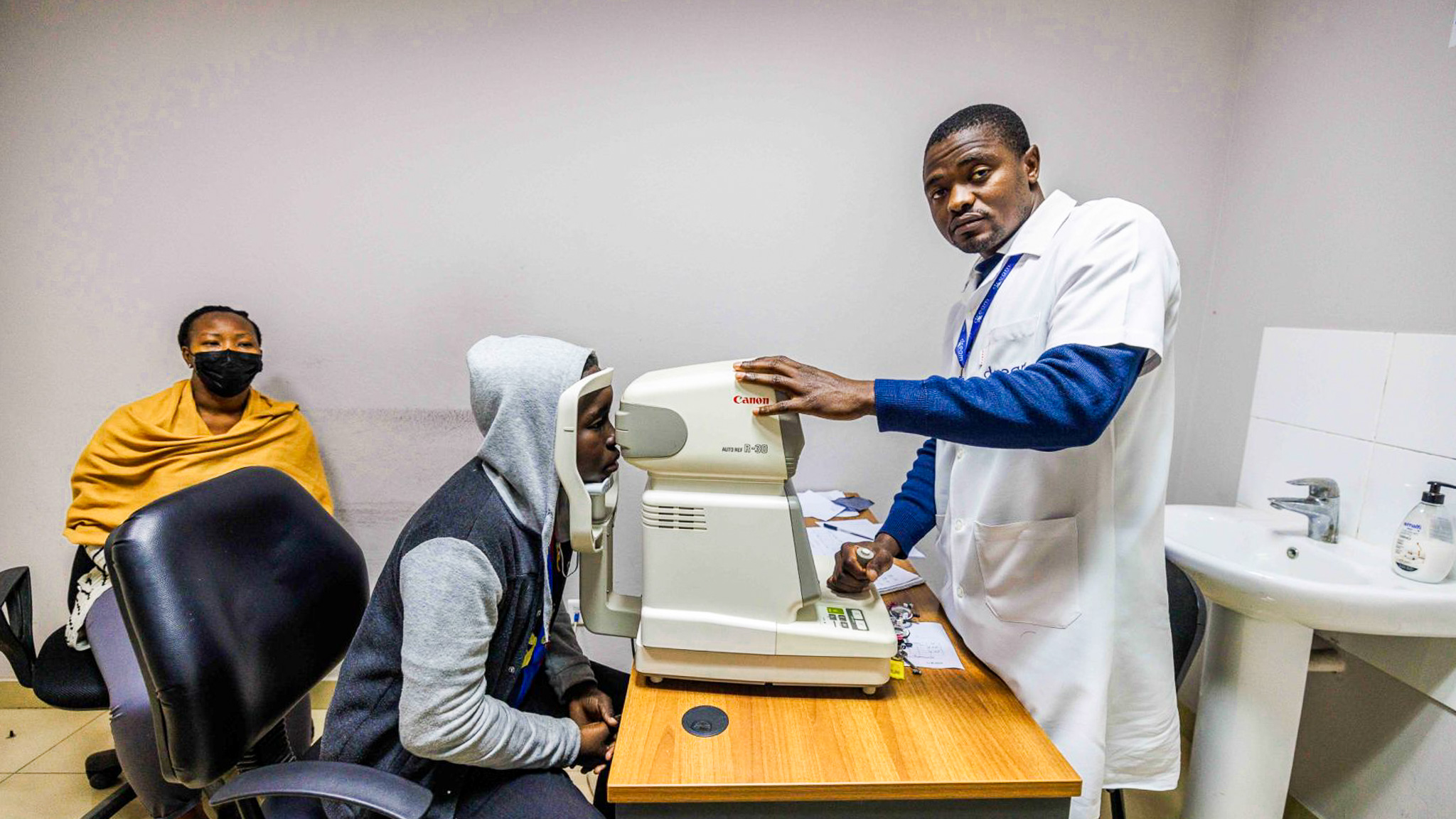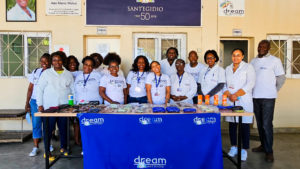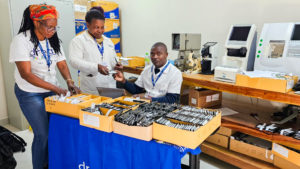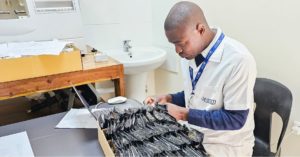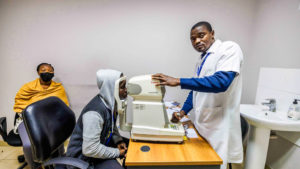The Story of Joao and the Impact of the DREAM Program on Ophthalmic Care in Mozambique
In the ophthalmology clinic of the Matola Dream Center, hundreds of children and young people with visual problems are treated.
“My son Joao has always been attached to the blackboard since he was little. If he fell behind, it was the end. A visually impaired person in Africa doesn’t have the same rights and opportunities as others. Now he is 14, and you, with these glasses, have given him a new life,” says Joao’s mother through tears. He is one of many young people with visual impairments who, after a precise diagnostic journey, received glasses free of charge at the ophthalmology clinic in the DREAM Center in Matola at the end of September.
The center is well-equipped with sophisticated equipment. The optometrist makes custom glasses. The clinic is also provided with lenses and frames, which numerous Italian donors periodically supply.
Opened in 2019, the clinic provided eye examinations to over 9,000 people and manufactured hundreds of glasses, freely offered to as many children and young people during screening campaigns in the schools of Matola. In Joao’s case, it wasn’t possible to make them there as the prescription was very high and the glasses had specific features. However, they were able to be made and imported from Italy, thanks to a vast support network initiated by the DREAM program for several years.
In addition to conducting routine checks, measuring vision to detect risky conditions, identifying appropriate preventive treatments, and making glasses, the clinic also has a kind of mobile unit that reaches schools and the nearby Sant’Egidio Nutritional Center for vision checks and measurements.
The quality and excellence of this prevention and care service are a tangible response to at least partially bridge the wide gap between the global North and South. Prevention and timely diagnosis allow for rapid recovery paths and in many cases prevent blindness.
There are 2.2 billion people worldwide with vision disorders, visually impaired, or affected by complete blindness. About half, 1 billion, could have saved their eyes if they had received the necessary treatments to correct their defects, from myopia to glaucoma to cataracts. This is highlighted in the first report by the World Health Organization on vision.
In the sub-Saharan African regions, rates of blindness are eight times higher than those in all affluent regions. “In middle and low-income countries, vision problems are not treated with due attention. Someone born in a poor country with poor distance vision, for example, has very little chance of receiving treatment to correct the defect. The unmet needs of low-income populations are four times higher than those in wealthy countries.”
